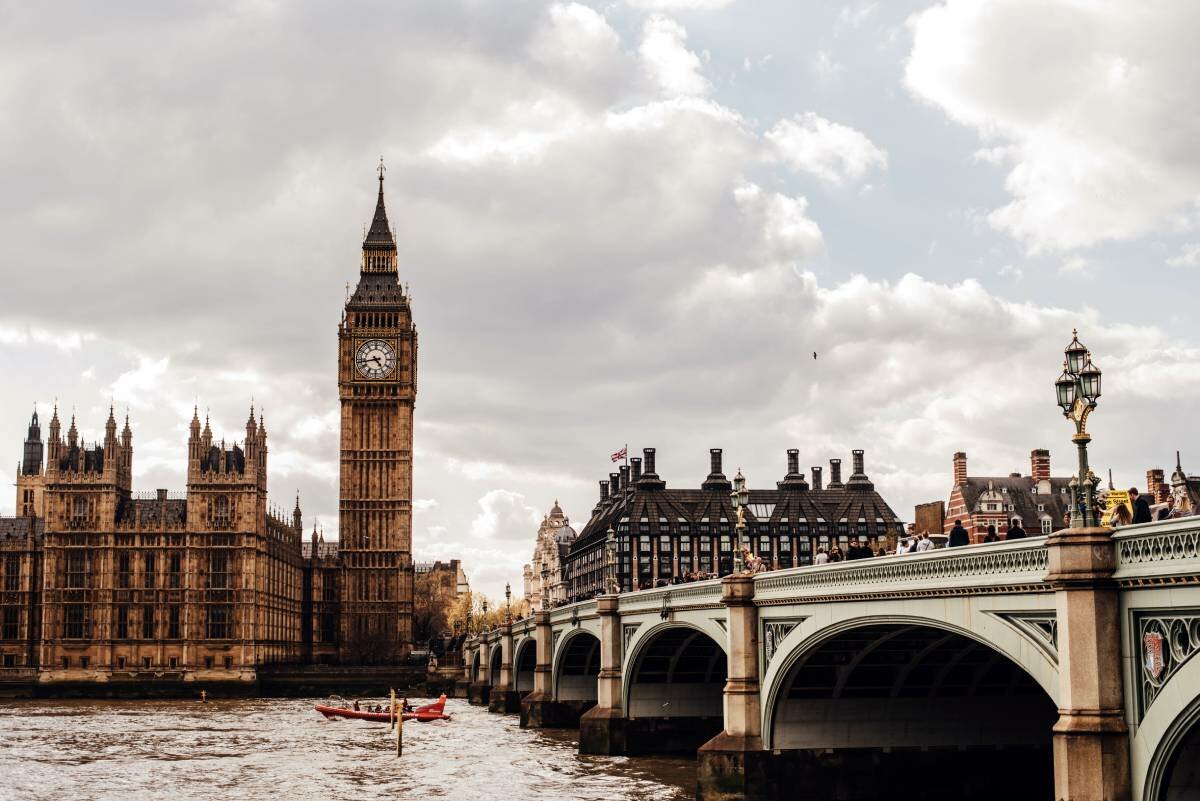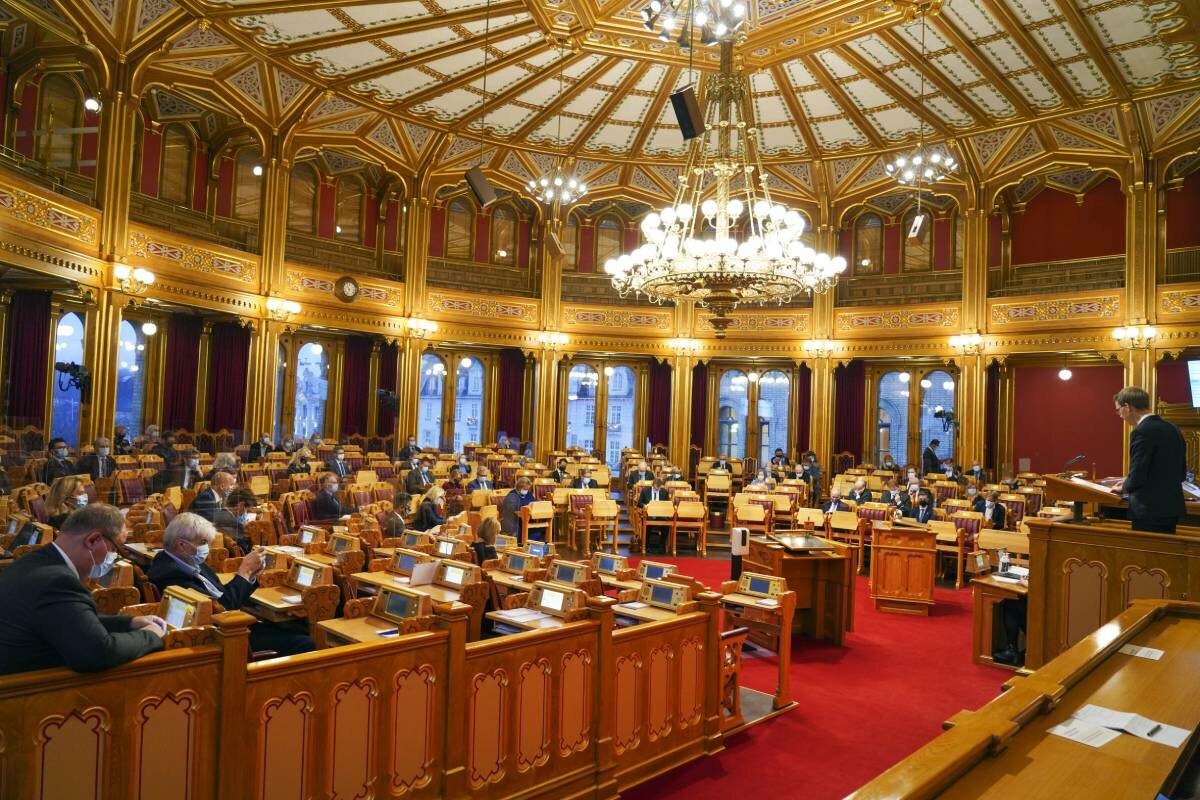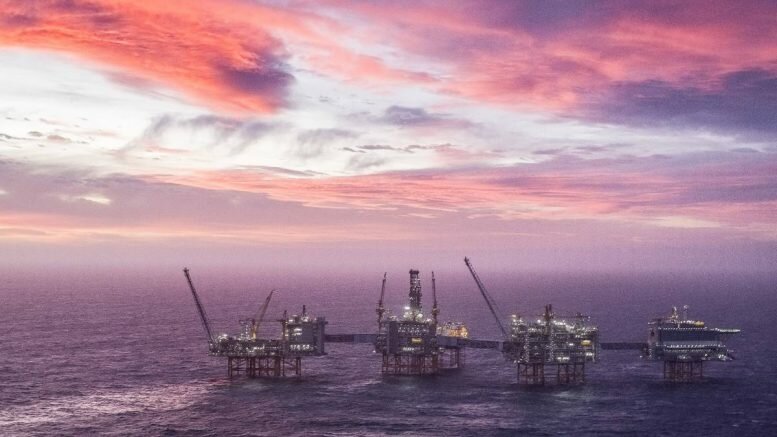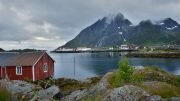How can a country of just over 5 million own 1.4% of global stocks and shares? Why does Norway have a savings fund that is larger than the Mexican economy? What makes Norway so influential in ethical and green investment? The answer to all of these questions is the Government Pension Fund of Norway. The “Oil Fund” was set up to be a sort of national “piggybank” for use in bad times and future generations. However, it has now made Norway a major economic, ethical, and environmental powerhouse. How did this happen? Read on for all you need to know about Norway’s Oil Fund.
The “Oil Fund” is actually two separate funds
So much of Norway’s current wealth and influence can be traced back to the discovery of oil in the North Sea in 1969. When engineers discovered “black gold,” little did they know what the consequences would be for Norway.
Much press has been given to the size and the composition of Norway’s “Oil Fund” but it is important to know that it is actually two different sovereign wealth funds with a different focus and outlook. The first, established in 1967, is called the “Government Pension Fund – Norway” (Statens pensjonsfond Norge, SPN). This is a closed fund (i.e., no new capital is added) and is managed by the Folketrygdfondet, through a Ministry of Finance mandate, to provide the best possible financial return.
A couple of years after the establishment of the first fund, one of the largest offshore oil reserves was discovered off the coast of Norway. The Norwegian government decided to use a cautious approach to the use of oil revenues to try to keep economic imbalances to a minimum. A second fund was to be created in order to invest oil revenues globally. This second, and more famous fund, is called the “Government Pension Fund – Global” (Statens pensjonsfond utland, SPU) and was established on June 22, 1990. The first money was deposited into it in 1996 and it has now ballooned into being worth some NOK 10.7 trillion, as of December 31, 2020.
So just exactly who owns the SPN fund and how is it managed?
The Norwegian government, through the Ministry of Finance, is the legal owner of the SPN fund. However, daily operations and management are overseen by the central bank of Norway, Norges Bank. Here there is a specific department, the Norges Bank Investment Management, established to handle the SFN. However, the daily operation and management are under direct and strict guidelines established by the Ministry of Finance.
Each year, the Norwegian government can only spend a small amount of this fund as it was established in order to safeguard the future economic prosperity of Norway once the oil reserves have dried up. This small amount, however, accounts for almost 20% of the annual state budget.
When the COVID-19 pandemic hit Norway, the government had already budgeted to spend NOK 240 billion of the fund. Yet the economic and financial crisis saw the Solberg government dip further into the fund, to support both the Norwegian economy and society, to the tune of a further NOK 190 billion. Thus, in 2020, some NOK 430 billion, from the fund, was spent here in Norway.

Properties in New York, London and Paris
The SPU fund is one of the largest sovereign wealth funds in the world. According to Norges Bank, this fund owns almost 1.5% of all shares listed in financial markets worldwide. Not bad for a country of just over 5 million people, right?
The fund has holdings in over 9,000 companies worldwide which ensures a small flow of profits every year. In addition, the fund is also a huge landlord. It owns huge swathes and sections of cities worldwide. According to The New York Times, the fund has invested heavily in the (literal) center of many global cities. For example, it owns a significant amount of property on Savile Row and Regent Street in London, some in Times Square in New York, and along the iconic Champs Elysee in Paris.
Aside from being a global landlord, the fund also lends to both companies and countries.
What doesn’t the fund invest in? Tobacco and guns…
The fund also has a reputation for helping Norway to punch, both politically, economically, and financially, well above its weight. Due to the size of the wealth fund, it can have a significant impact in both the political and economic spheres. Here, it can be influenced by the political whims of the Norwegian government and help them push their foreign policy aims and goals indirectly.
The Ministry of Finance has set up an independent “Council on Ethics” which analyses and scrutinizes the business practices of companies that the fund wants to invest in. Upon the release of the fund’s annual report, companies can be added, excluded, or “put under observation.” The fund has a mandate to not invest in companies whose business practices cause environmental or human rights violations whilst also excluding companies that produce tobacco or weapons.
Some companies that have been excluded include British American Tobacco Ltd. (USD 683 million investment was divested on January 19, 2010, for “production of tobacco”), Rio Tinto Group (a British-Australian mining giant saw a USD 882 million divestment in 2008 due to “severe environmental damage”), and Wal-Mart (the behemoth American multinational retail chain saw a USD 372 million divestment in 2006 for “breach of labor and human rights”).
However, if companies change their activities, there is hope that can be reinstated. BAE Systems Inc., a British multinational arms, security, and aerospace company, was excluded in 2005 for “production of nuclear missiles for the French Air Force through the company MDBA”. However, it was reinstated, due to better practices, on January 11, 2013.

Political and ethical machinations of the fund
As the fund has become so large, and it is indirectly controlled by the Norwegian government, it has, in recent years, become a hot political issue. There are three main issues surrounding the fund.
The first regards spending. As mentioned, the COVID-19 pandemic saw the Solberg government dip into the fund in order to prop up Norway’s economy and to provide extra security for social programs. This was controversial already as some political parties on the right want to increase spending whilst those on the left want to decrease fund spending.
The next issue is the fact that the fund owns so many shares. Financial markets are extremely volatile and there is the chance that, should there be a global recession (or even depression), financial gains from the fund would be wiped out. The stock market is a gamble, at the best of times, and many are questioning whether this is the best approach for the savings of previous generations for future ones.
The last main issue is about ethics. The Council on Ethics, an independent body, broadly decides what “ethical” investment is. However, what is “ethical” today may not be “ethical” tomorrow. That such hundred of billions of kroner can be decided by a Council could be cause for concern.
What has a higher ethical priority: to ensure the fund continues to grow for use by future generations or to make a political or ethical stand and divest all money from countries and companies with questionable records at the expense of growth? In 2014, the fund divested from 53 coal companies globally which led to a USD 9.7 billion drop in the fund’s value.
Diversification & renewable energy
The fund now has stated that it wants to diversify its holdings away from property and the stock market and seek to invest in renewable energy sources. With a mandate from the Ministry of Finance, the fund can spend NOK 120 billion a year on renewable infrastructure. As the world looks to more green and environmentally sustainable options, so too has the fund.
This year saw the fund make its first serious investment in renewable energy. It paid 1.4 billion for a 50% stake in a Dutch offshore wind farm owned by the Danish group Orsted. Talking with The Financial Times, Mie Holsted, chief real assets office at the fund, said “This is an area where we see a lot of opportunities going forward…we see the diversification it can give us…”
Whatever the future holds for the world and Norway, one thing is certain: the foresight and planning of previous generations have ensured that future generations here are well-placed thanks to the “Oil Fund.”
Source :#Norway Today / #NorwayTodayNews
Do you have a news tip for Norway Today? We want to hear it. Get in touch at [email protected]






Leave a comment